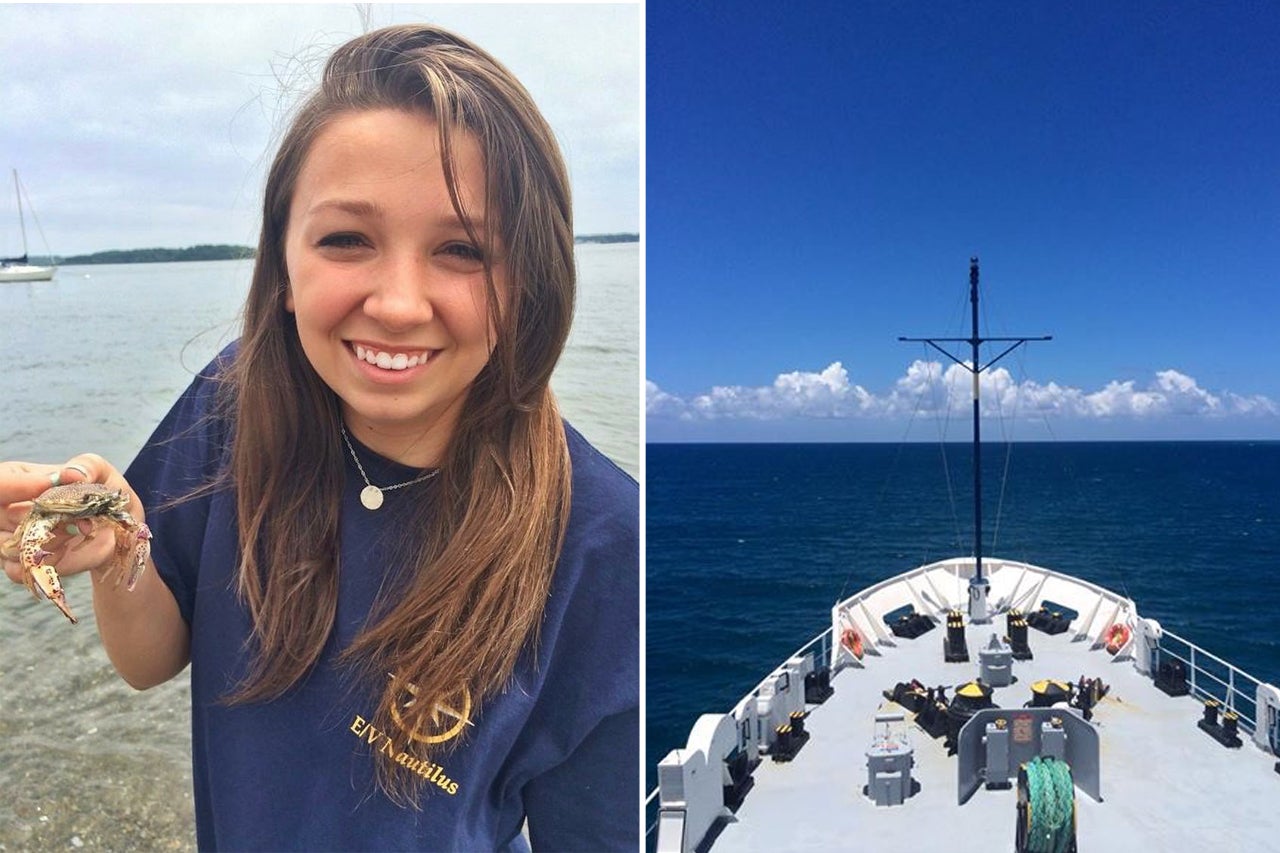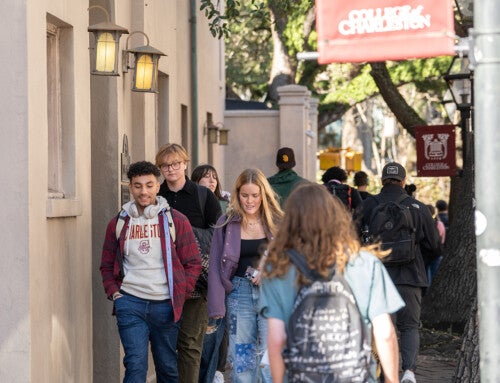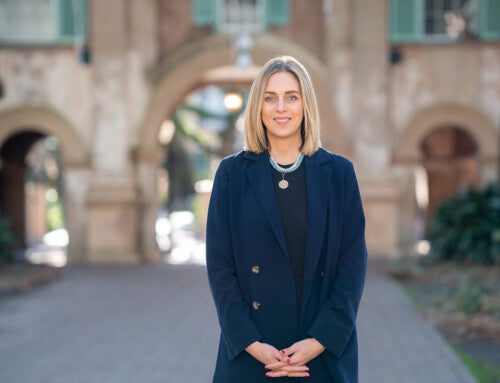One book was all it took for Alexandra Dawson to decide she wanted to devote her life to exploring the world’s vast oceans.
As part of an eighth-grade summer reading assignment, the Columbia, South Carolina, native read a book about famed oceanographer and discoverer of the wreck of the H.M.S. Titanic Robert Ballard. That book put her on a course to eventually study geology at the College of Charleston, where she has thrived under the guidance of geology professor Leslie Sautter.

Allison Fundis of the Ocean Exploration Trust and Dawson (right) while connecting with a few schools during a scheduled interaction.
“I was instantly hooked and interested in ocean exploration and marine science in general,” recalls Dawson, now a rising junior at the College. “There’s so much of the ocean that nobody knows anything about, and I believe that it’s important to explore it.”
This summer, Dawson is participating in the Science and Engineering Internship Program through the Ocean Exploration Trust, an organization founded in 2008 by Ballard.
After joining the crew of the E/V Nautilus in early May 2017, Dawson set sail on a month-long research trip from San Pedro, California, to Victoria, Canada. The crew’s mission was to map the ocean floor around the Channel Islands and to help the National Marine Sanctuaries by producing high-resolution maps of the sanctuaries around California. Then, in late June, Dawson and the crew shifted their focus to searching for underwater seeps between Canada and Oregon.
Dawson says a typical day onboard the Nautilus includes team briefings, assisting with deck operations to measure the sound speed, temperature, and salinity of the water; and communicating via video feed with children at various schools, museums and camps. She also has watch duties from 4 p.m. to midnight during which she monitors different types of seafloor mapping software and processes data.
When she has downtime, Dawson enjoys socializing with other crew members and whale watching on the ship’s deck.
And this is not even the first time she’s worked with Ballard’s organization. The summer before her senior year at Spring Valley High School, Dawson applied for and won a spot in the Ocean Exploration Trust’s Honors Research Program. As one of only eight students in the country selected for the program, Dawson traveled to the University of Rhode Island and studied all facets of marine science, including geology, biology, chemistry and ocean engineering.
That opportunity only solidified her academic and career goals, and she decided the College’s geology program was the perfect fit for her interests. She was especially intrigued by the geology department’s BEAMS (BEnthic Acoustic Mapping and Survey) program. Started by Sautter 10 years ago, the program has enabled more than 150 students to learn about multi-beam sonar technology, conduct and present research and participate in research at sea.
“Leslie Sautter took me in and showed me her BEAMS program at the College, and I was eager to start as soon as possible,” Dawson says. “I started the Intro to Seafloor Mapping course as a second semester freshman and continued into the BEAMS program my sophomore year where I was able to conduct my own research and collect data on a specific site.”
Dawson’s research project – The Geomorphological Analysis of Sand Waves at Lucifer Shoals, Ireland – won first place at the U.S. Hydro Conference in March 2017. She also won best poster in the Geology Department at the College’s poster session in May 2017.
RELATED: Read how the BEAMS program provides students with a one-of-a-kind research experience at sea.
Sautter says Dawson immediately took to studying marine geology and hasn’t looked back since.
“She completely dove into the science and was the youngest student to take the sequence of three seafloor mapping courses which included conducting research,” Sautter says. “She has tremendous drive and passion, and is a complete pleasure to know and work with. I just hope we can find enough bigger and more varied opportunities for her in these last two years!”
For her part, Dawson says it’s a bit surreal to be deeply engaged in a field that she first discovered by chance through a middle school reading assignment.
“I never thought that I would be working with the same man that I read about finding the Titanic in the eighth grade,” Dawson says. “Yet, here I am on his ship surrounded by his team for the second time.”






